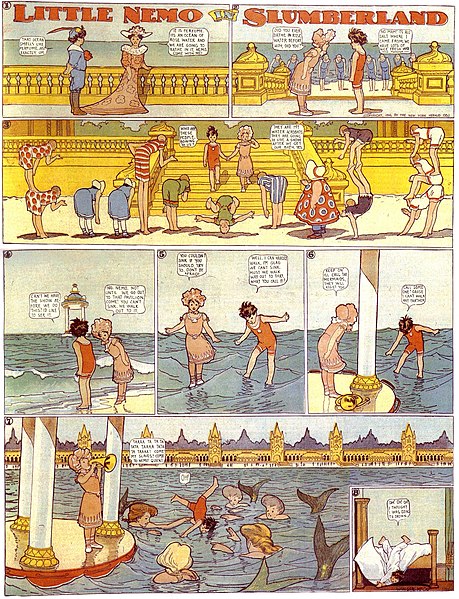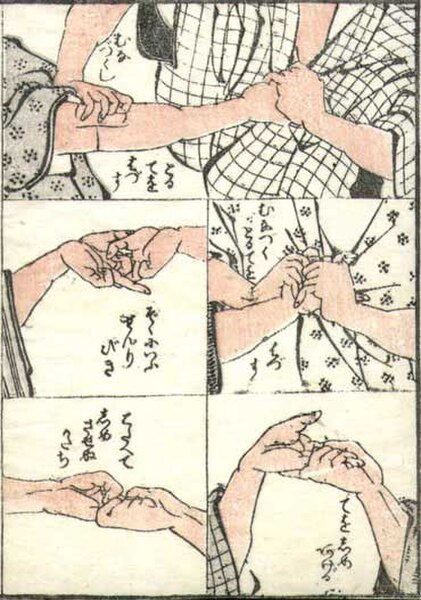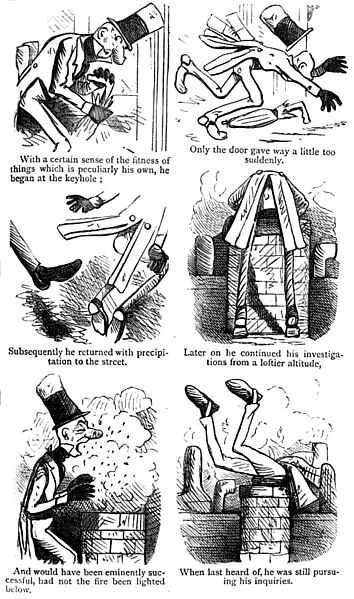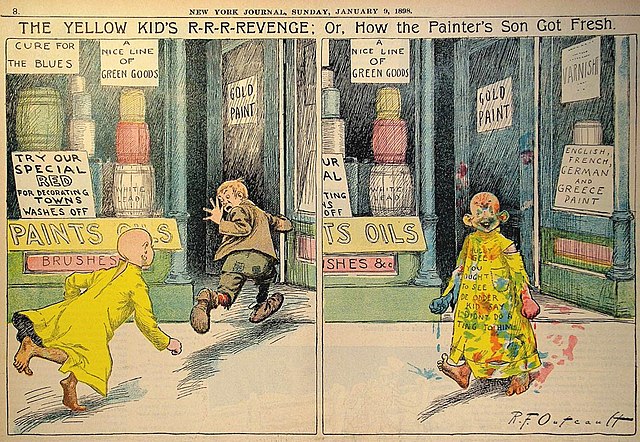Manga, in the sense of narrative multi-panel cartoons made in Japan, originated from Euro-American-style cartoons featured in late 19th-century Japanese publications. The form of manga as speech-balloon-based comics more specifically originated from translations of American comic strips in the 1920s; several early examples of such manga read left-to-right, with the longest-running pre-1945 manga being the Japanese translation of the American comic strip Bringing Up Father. The term manga first came into usage in the late 18th century, though it only came to refer to various forms of cartooning in the 1890s and did not become a common word until around 1920.
Chōjū-giga (12th century), traditionally attributed to a monk-artist Kakuyū (Toba Sōjo)
Image of bathers from the Hokusai manga
Japanese wood block illustration from 19th century
Hokusai Manga (early 19th century)
Comics are a medium used to express ideas with images, often combined with text or other visual information. It typically takes the form of a sequence of panels of images. Textual devices such as speech balloons, captions, and onomatopoeia can indicate dialogue, narration, sound effects, or other information. There is no consensus among theorists and historians on a definition of comics; some emphasize the combination of images and text, some sequentiality or other image relations, and others historical aspects such as mass reproduction or the use of recurring characters. Cartooning and other forms of illustration are the most common image-making means in comics; Photo comics is a form that uses photographic images. Common forms include comic strips, editorial and gag cartoons, and comic books. Since the late 20th century, bound volumes such as graphic novels, comic albums, and tankōbon have become increasingly common, along with webcomics as well as scientific/medical comics.

Little Nemo, August 19, 1906 strip
Manga Hokusai, early 19th century
Ally Sloper in Some of the Mysteries of Loan and Discount Charles Henry Ross, 1867
The Yellow Kid R. F. Outcault, 1898







